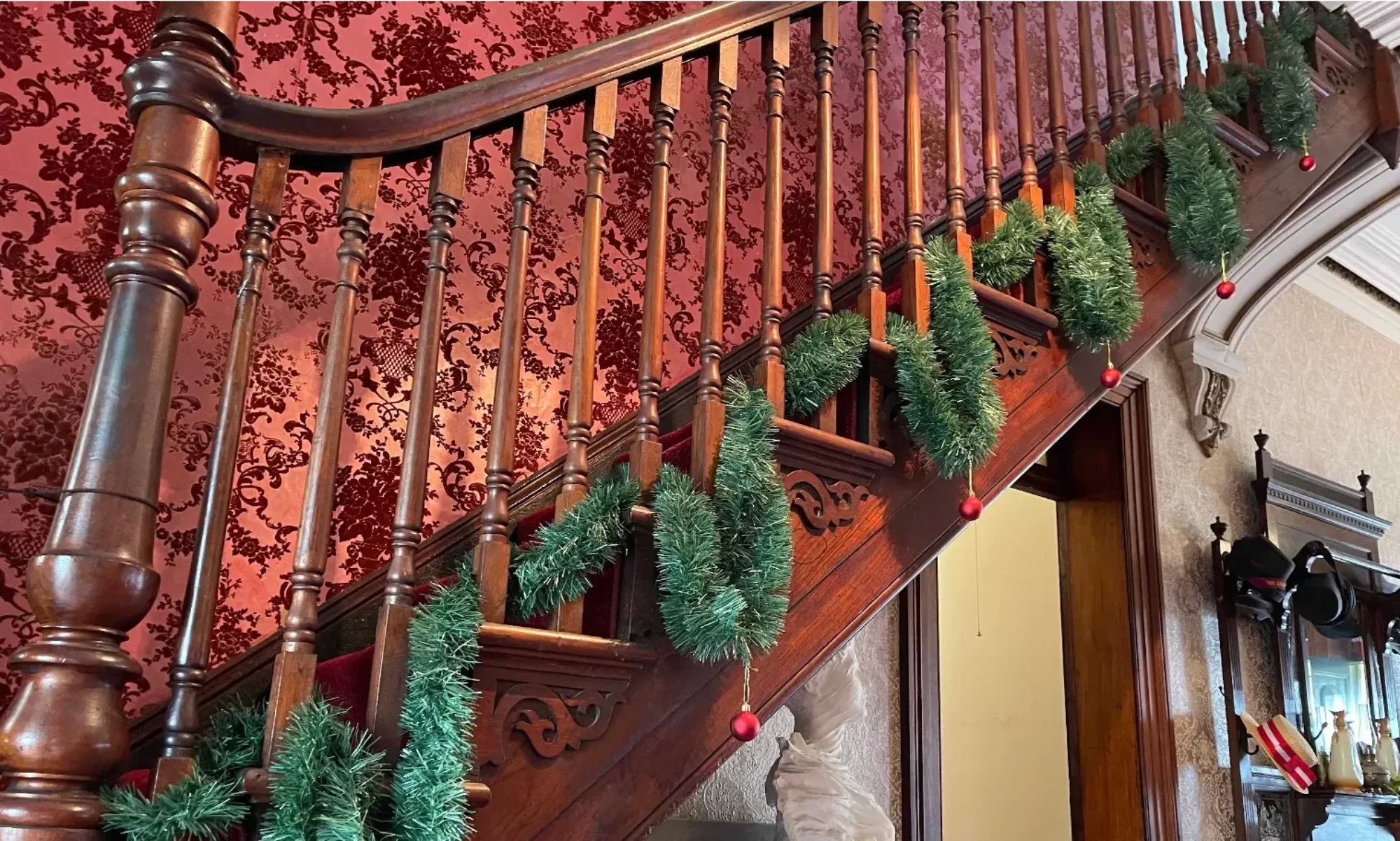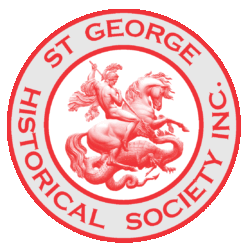by Kirsten Broderick, Local History Services Coordinator, Rockdale City Library
The National Trust runs a heritage festival every year, and every year Rockdale Council tries to participate in some way. This year, Council is holding a range of activities and I was asked to give a talk at Bexley Library focusing on the heritage of Bexley. This invitation has provided me with an opportunity to take a closer look at Bexley’s heritage-listed items, the reasons why they were heritage-listed and what they can tell us about the history of Bexley.
When looking at heritage-listed items, it is important to distinguish between the two different heritage lists that affect properties in Rockdale. Firstly, there is the State Heritage Register, which, operating under the NSW Heritage Act, lists places that are considered to be of significance to the whole state of NSW. Twelve items in the Rockdale local government area appear on this list, none of which are in Bexley. Lydham Hall, which is often talked about as a Bexley property, has been placed on the State Heritage Register; however, Lydham Avenue is actually within the suburb of Rockdale not Bexley. The second heritage list is the local heritage schedule contained within Rockdale Council’s Local Environmental Plan (LEP). This list contains those items that are considered to be of significance to the Rockdale local government area. In order to be assessed as being significant enough to appear on the heritage schedule, items have to meet at least one of a set of defined criteria. That is, they have to have historical, associative, aesthetic or social significance; research potential; be rare; or be representative. Rockdale Council has listed 237 properties or places as heritage items. Of these 237 items, 68 are in the suburb of Bexley.
This is a large number of heritage items for any one suburb and the number is indicative of the richness of Bexley’s history. When people hear references to council’s heritage list, they often just assume that it only includes houses and that the houses have been listed either because of their age or because of their architectural features. The list of items in Bexley does indeed include many fine individual homes that are representative of different eras and architectural styles – Victorian, Federation, Art Deco, Californian Bungalow and Inter-War houses all appear on the list. Many of these houses meet several of the criteria for heritage listing. Most of them have been assessed as having historical and aesthetic significance, and some of them meet other criteria as well. To give an example, the lovely stone cottage known as “Montrose” in Broadford Street has been assessed as having historical significance due to its being one of the earliest houses built west of Forest Road on the Chandler Estate; as having aesthetic significance because the fine details of the building demonstrate late nineteenth century building materials and techniques, and because the house contributes to the streetscape of Broadford Street as a whole; as being representative of the type of stone buildings that were built in Bexley during the 1880s; and finally as having associative significance because it is associated with its builder and original owner George Bain and his wife Catherine. George Bain was a gifted stonemason who worked on the building of Sydney University. Catherine Bain, known as “Kitty”, was a well-known Bexley nurse and midwife who delivered hundreds of Bexley babies and was remembered for her role in successfully nursing dozens of patients through the 1918-1919 flu epidemic that resulted in tens of thousands of deaths worldwide after World War I.

Another Bexley property on council’s heritage list, “St Elmo”, is more well-known. This large house in Harrow Road, Bexley, was built in 1897 for Joseph Palmer. As is the case with “Montrose”, even a brief look at “St Elmo” will show how it matches the criteria for heritage listing. “St Elmo” is considered to be of historical significance because it is an example of the type of grand villas that were built in Bexley in the late 1800s. “St Elmo” meets the criteria of aesthetic significance and the criteria of rarity because it is a rare example of a house built in the transitional architectural style between Victorian and Federation, and because of its distinctive gable which features a decorative panel depicting a Kookaburra – evidence of the turn-of-the-century fashion for Australian motifs in architectural design. Harrow Road contains several heritage-listed properties and many distinctive houses, “St Elmo” is of aesthetic significance not just because of its own beauty, but also because it is one of a number of fine homes in Harrow Road and it adds to the streetscape as a whole.

Lastly, “St Elmo” is considered to be of associative significance because it is associated with its architect William Kenwood and its original owner Joseph Palmer. William Kenwood was probably our most well-known and successful architect; he designed many buildings in the area, the most prominent being Saywell’s Brighton Hotel, the St George Bowling Club and the heritage-listed Victorian terraces on The Grand Parade. Kenwood designed “St Elmo” for Joseph Palmer, a senior railroad official. The Palmer’s were a successful, community-minded family. One of Joseph’s sons, Claude, had married a musician named Edith Dickerson who performed regularly with a group called the Cheerio Girls. After their marriage, Claude and Edith lived in the 14-roomed house along with Claude’s brother Oriel. By 1928, the Palmer’s had been part of the Bexley community for 30 years, Joseph Palmer was retired and nearly an invalid but his niece Jessie was a nurse and had moved into the house to take care of him with the help of a housekeeper named Elizabeth Astley. Another relative, Garnet Robb, a nephew of Joseph’s wife, was also staying with the family. On Thursday 1 November 1928, while Claude and Oriel were at work, Robb hid himself behind the kitchen door and, while the family were having lunch, fired off seven gun shots in quick succession. Jessie Palmer and Elizabeth Astley were both killed instantly. Joseph Palmer and Claude’s wife Edith were both shot and would die later from their wounds. After shooting his family, Garnet Robb then shot and killed himself. This tragedy was one of the worst murders in the district’s history and made headlines around the country.
This is just a brief look at only two of Bexley’s heritage-listed houses, but it demonstrates how when you start to look at the houses on the heritage list in detail you can begin to build up a picture of the suburb’s development and the story of its residents. However, the heritage list contains more than just houses: parks; churches; a convent; the former quarry in Bexley Road; street plantings; the sewer vents in Connemarra Street; the original Bexley Public School buildings; the Marist College in Wolseley Street; the Bexley School of Arts; the St George Bowling Club; a service station; the Jack and Jill Preschool, which was built in 1901 as the Bexley Council Chambers; and the Bexley Fire Station all appear on the list. When you look at these places in detail you build up an even better picture of Bexley and its history – its infrastructure, educational and religious institutions, and its municipal history. Bexley and Rockdale, once separate municipalities, were amalgamated in 1949, and, in the years since then, Bexley has inevitably lost some of its separate character and unique identity. However, the sheer number of heritage-listed items in this single suburb offers an eloquent testimony to the depth and richness of Bexley’s history. Moreover, an understanding of Bexley’s heritage-listed items reveals the dual value of having a heritage list. Firstly, the heritage list ensures that historically significant items are preserved for future residents to enjoy. Secondly, even a small amount of knowledge about the items on the list and the reasons they appear there opens a window into the past and provides a pathway to understanding Bexley’s own unique history.
Notes
In September 2016, Rockdale Council was merged with Botany Council to form Bayside Council. The council’s local heritage schedule can be found on the NSW Legislation website.
Both Bayside Council’s local heritage schedule and the State Heritage Register can be found on the Heritage NSW website.
This website also contains the criteria for heritage listing, information about all the properties on the heritage list and the reasons for their listing.
This article was first published in the January 2012 edition of our magazine.
Browse the magazine archive.


I currently live in St Elmo, which has been subdivided into four units. I have been to Woronora Cemetery to visit the graves of Joseph, Edith and Jessie, and, not far away, Elizabeth Astley. (Garnet Robb is at Rookwood – I haven’t searched for his grave yet). I am new to the St George area, but am interested in the history of the suburb.